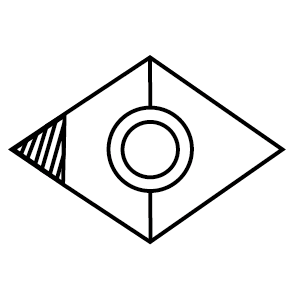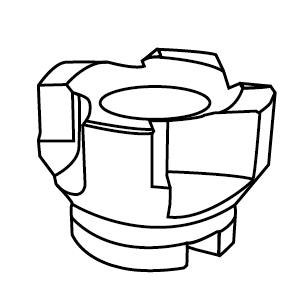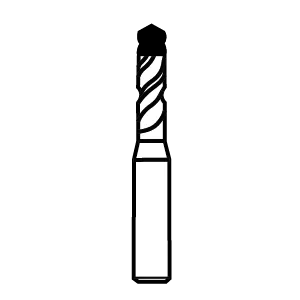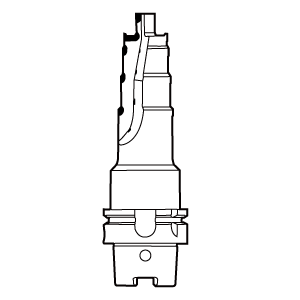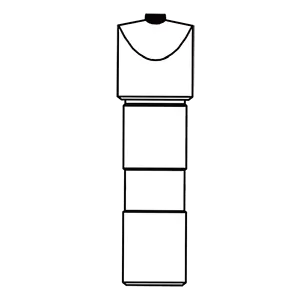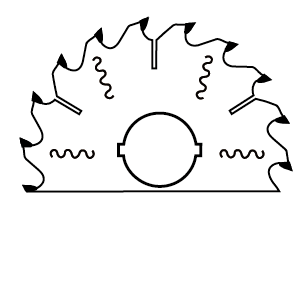Upcut vs. Downcut Router Bits: Choosing the Right One for Wood Projects
In woodworking, choosing the right broca de tupia is very important for the quality of the cut and the efficiency of the work, and it can be difficult to pick the right tool for your job when there are so many options in woodworking. Here’s a question our Sundi engineers hear weekly: “What’s the real difference between up-cut and down-cut router bits?” Due to the difference in the direction of the cutting edge, the upcut router bit and the downcut router bit are each designed for a specific application to achieve different cutting results. Therefore we have written this article explaining the difference between up-cut and down-cut router bit to help you choose the right woodworking tool for you to get the perfect finish.
Conteúdo
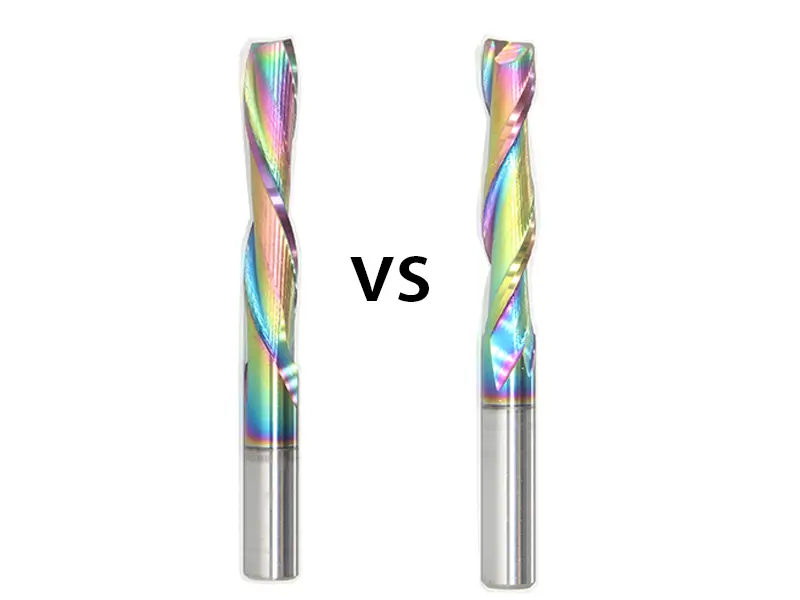
The Differences Between Up Cut and Down Cut Router Bits
Up Cut Spirals router bits
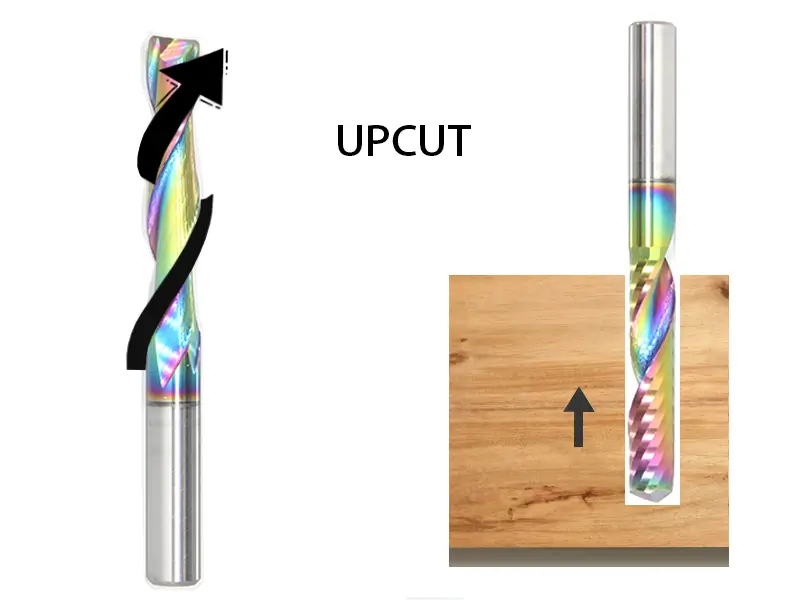
When examining an up-cut spiral router bit, you’ll notice its cutting edges angle upward from left to right – similar to a twist drill’s design. During operation, the spiral action pulls material upward, ejecting wood chips through the top. This upward chip evacuation prevents debris buildup in the cutting zone, which helps avoid two common issues: heat accumulation and scorch marks. More importantly, it keeps the workpiece’s underside clean and splinter-free, making these bits ideal for precision tasks like mortise-and-tenon joinery or deep groove cutting.
However, that same upward pull has a trade-off. The lifting force can raise surface fibers along the cut’s top edge, leading to tear-out on your workpiece’s face. This becomes particularly noticeable when working with thin materials or laminated stock, where the upward pressure might even cause splitting or warping.
Down Cut Spirals router bits
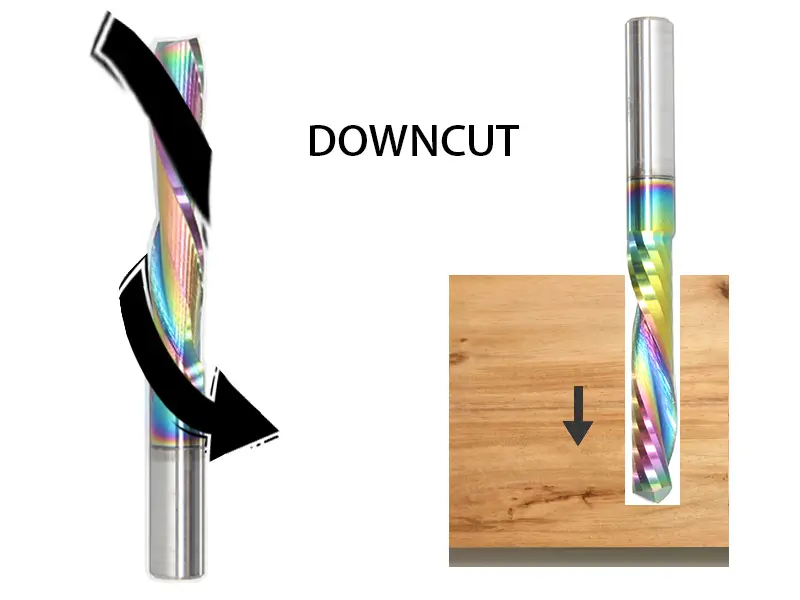
In contrast to up-cut router bits, down-cut spiral bits feature cutting edges that angle downward from left to right. During operation, the spiral flutes force chips downward into the workpiece. This downward compression creates glass-smooth top surfaces without tear-out, making them perfect for finish-critical projects like veneer work or laminated board polishing.
But there’s a catch: Unlike up-cut spirals, down-cut bits demand slower feed rates. The downward pressure traps chips in the cutting groove, requiring frequent pauses to clear debris. If chips accumulate excessively, they’ll clog the bit – a scenario that risks overheating and premature baseplate wear. This fundamental limitation makes them poorly suited for deep-cut applications.
Key Differences
Reading this, I believe you have a clear understanding of upcut and downcut router bits, then we list the differences between them in detail:
Chip Removal
The most obvious difference lies in blade orientation. Up-cut bits angle upward left-to-right, ejecting chips through the top. Down-cut versions spiral downward left-to-right, compressing debris into the workpiece.
Material Handling
Up-cut bits dominate general woodworking – ideal for solid wood, acrylics, and PVC. Down-cut variants shine with layered materials like plywood, MDF, and veneers where surface finish trumps speed.
Operation Scenarios
Reach for up-cut bits when creating deep mortises or roughing grooves – their aggressive chip clearance powers through dense materials. Down-cut bits excel at delicate tasks: edge-trimming veneers, shallow engraving, or polishing pre-laminated surfaces.
Tool Longevity
Here’s the trade-off: Down-cut bits’ chip-trapping design causes faster wear. Up-cut bits’ superior debris ejection keeps edges sharper longer, making them the workhorse for heavy-duty jobs.
Which bit is right for your project?
The choice of up or down cut router bits depends on the needs of your project.
If you need a deep cut or a clean bottom edge, choose the upcut router bits, if you need to make shallow grooves, notches, dadoes, and need a clean top surface, or if you are working with veneer or thin wood that may warp, choose the downcut router bits. If you need a neat edge on both the bottom and top edges, this is where I recommend the Compression Router Bit.
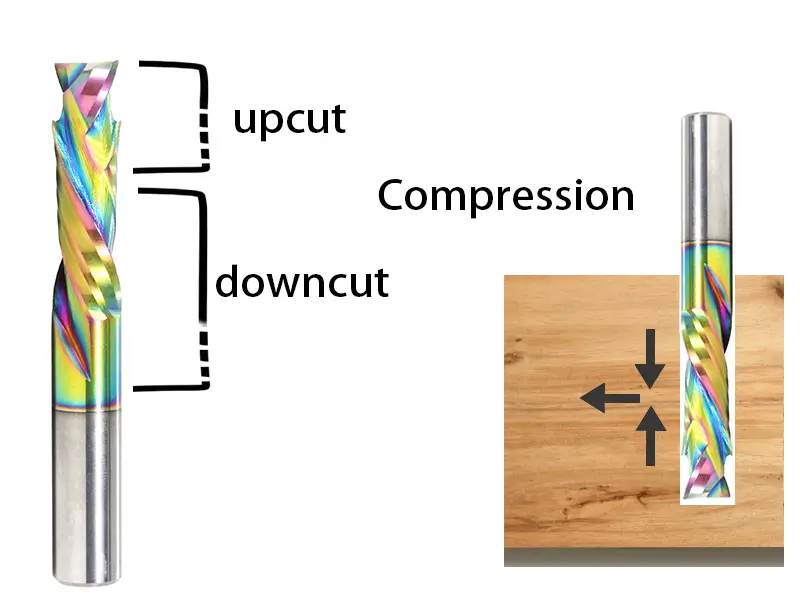
The Compression Router Bit is a combination of up and down cutting edges, with the down cutting edge near the shank and the up cutting edge near the top of the router bit, which pulls the chips towards the centre rather than outwards, where they are thrown down by the upper part of the bit and scooped up by the lower part. The chips are thrown down by the upper part of the head and scooped up by the lower part, hence the name ‘Compression’. With the Compression Router Bit, the composite material is pressed together during the cutting process, preventing delamination and keeping the bottom and top edges neat, making it ideal for laminated plywood or cabinet panels, but not for very shallow cuts. Of course the Compression Router Bi t is also a little more expensive and requires specialised skills, but of course if you are on a budget and know how to use it properly then the Compression Router Bit is the way to go.
We hope this side of the article can provide you with some reference suggestions. Be sure to check out our full range of carpentry router bits to make sure you have the right tool for the job.

